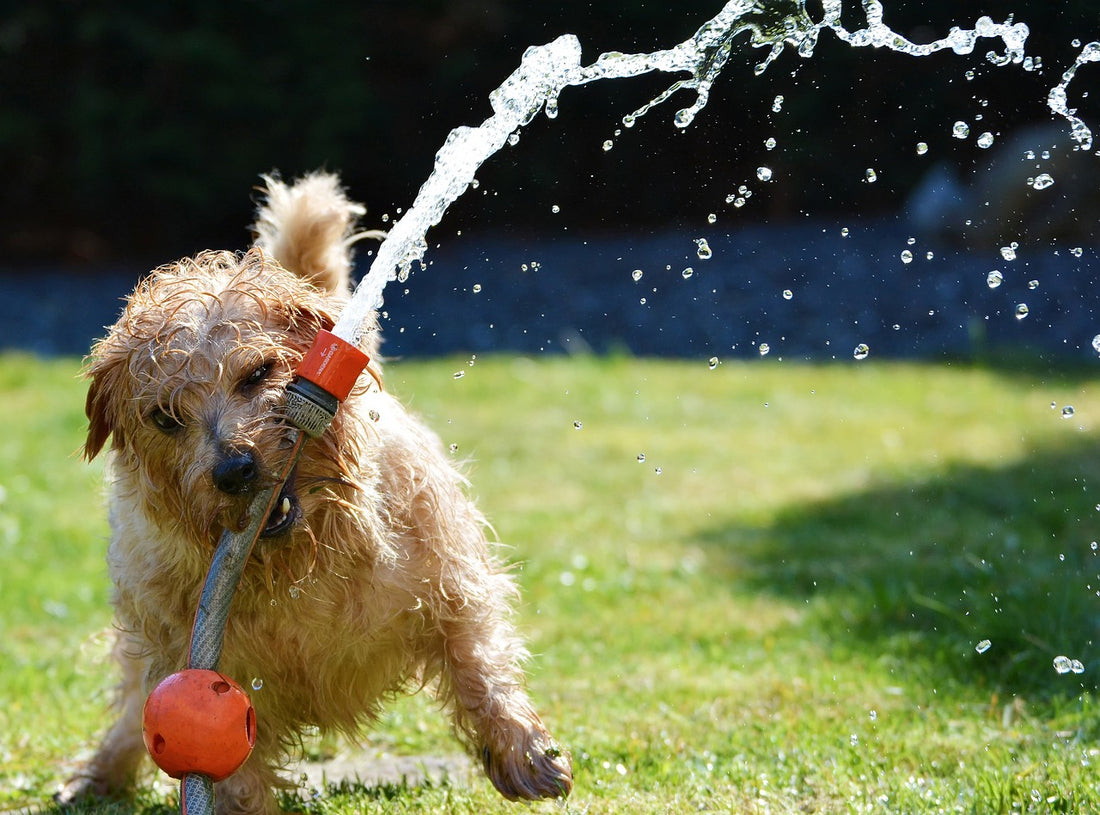Reasons for Excessive Thirst in Dogs.
Dehydration
- Causes: Hot weather, high activity levels, gastrointestinal issues (vomiting, diarrhoea), illness, pregnancy, nursing.
- Solution: Ensure consistent access to fresh water and monitor their health. Consult a vet if dehydration persists.
Hot Weather
- Explanation: Dogs pant to cool down, which leads to water loss. Increased water intake compensates for this.
- Solution: Keep your dog hydrated, provide shade, and avoid intense activities during peak heat.
High Activity Levels
- Explanation: Active dogs, especially puppies, drink more to replenish after exercise.
- Solution: Ensure water is readily available, especially after exercise.
Medications
- Explanation: Certain medications like anti-inflammatories, seizure meds, and corticosteroids can increase thirst.
- Solution: Discuss side effects with your vet and manage your dog’s hydration accordingly.
Medical Conditions
- Examples: Diabetes, kidney disease.
- Solution: Monitor for other symptoms (e.g., frequent urination, lethargy) and seek veterinary advice.
Diet
- Explanation: Dogs on dry food may drink more water compared to those on wet food. High-sodium human foods can also cause increased thirst.
- Solution: Provide a balanced diet tailored to your dog’s needs and avoid feeding them high-sodium human foods.
When is Increased Water Intake Normal?
- Puppies: They urinate more frequently and thus drink more water.
- Active Dogs: Increased exercise leads to higher water consumption.
- Hot Weather: Dogs naturally drink more to stay hydrated.
When to Be Concerned
- Sudden Increase in Water Intake: Coupled with a swollen belly or other symptoms like lethargy, loss of appetite, vomiting, or diarrhoea.
- Persistent Thirst: Extended periods of excessive drinking.
- Abnormal Behavior: Seeking water in unusual places (e.g., puddles).
If these signs are present, consult a veterinarian to rule out serious health issues.
Managing Your Dog’s Water Intake
Regular Drinking Routine
- Fill the water bowl at the same time each day.
- Measure the amount of water to monitor intake.
- Clean the water bowl daily.
Monitor Health and Behavior
Keep an eye on any changes in behavior or health that might indicate underlying issues.
Provide a Balanced Diet
Choose high-quality dog food tailored to your dog's specific needs. Avoid feeding high-sodium human foods.
Conclusion
Monitoring and understanding your dog's water intake is crucial for their overall health. While occasional increased thirst can be normal due to activity or weather, persistent excessive thirst might indicate an underlying health issue. By establishing a regular water routine, providing a balanced diet, and seeking veterinary advice when necessary, you can help ensure your dog remains healthy and well-hydrated.

